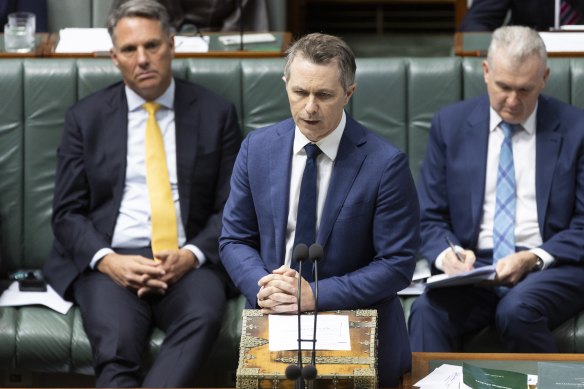
Loading
Let me explain how that average person would have ended up there.
HELP is an income-contingent loan, which means graduates do not start paying it off until they are earning above a particular threshold.
Once a graduate starts earning more than $51,550, their employer needs to start deducting HELP repayments from their pay alongside income tax. At that wage, the repayment rate is 1 per cent, but it rises to 10 per cent for people earning $151,201 or more.
Now, there is technically no interest on a HELP. But annually on June 1, it is indexed by the rate of inflation (it’s calculated using the Australian Bureau of Statistics’ consumer price index, but is slightly different to the annual inflation rate – you can read more about that here).
That indexation is applied to whatever part of the loan has been unpaid for more than 11 months.
That sounds fine, except for three things.
Firstly, inflation has been high, which meant that for 2023, the indexation rate was 7.1 per cent. Those with mortgages will know what a jump of that size would feel like.
Secondly, the size of HELP debts has ballooned for many degrees since the Morrison government’s changes to the Job-ready Graduates scheme hiked fees for common degrees like a bachelor of arts – what cost me $16,000, can now cost $50,000. And the current government has no immediate answers to fix this.
Those large debts are also affecting young people’s ability to get home loans.
Thirdly, and importantly, none of the payments made throughout the year are taken into account when a student’s debt is indexed.

Independent MP Monique Ryan says HECS debts have become a burden.Credit: Alex Ellinghausen
At the moment, when real wages have gone backwards, rents are soaring and other cost-of-living pressures continue to make life tough for younger Australians in particular, Ryan says this is unfair.
“We are burdening a generation which is already dealing with a cost of living prices and a housing crisis,” she said last week.
Loading
Ryan and her fellow teal independents say this should change, and she has a petition supporting her push – at the time of writing, about 190,000 people had signed it and counting.
They said there are two things the federal government could consider. One option is applying the lowest indexation rate between either inflation or the wage price index, so no one’s debt increases faster than they can repay it.
The other option is applying indexation on November 1, so the payments taken out through the year actually count.
Those ideas haven’t come from nowhere: those recommendations are also in the Australian Universities Accord final report, which was commissioned by the federal government and released in February.
That report found that the HELP system needs to be modernised, and made fairer and simpler.
It recommended reducing student contributions to wind back the biggest changes from the Job-ready Graduates program and move back toward a scheme based on projected lifetime earnings.

Education Minister Jason Clare raised the issue during question time last week.Credit: Alex Ellinghausen
It also recommended changing the indexation rate to whichever was lower between inflation or the wage price index, and reducing repayment times by changing when indexation is applied so that the money withheld from graduates’ incomes is counted before their debt is indexed, not afterwards.
So what is the federal government doing about it? Well it’s interesting that Education Minister Jason Clare highlighted in question time last week that Labor MPs including Kate Thwaites, Carina Garland, Alison Byrnes and Josh Burns have also raised the issue with him.
He said these issues are why he commissioned the Universities Accord report – a blueprint for higher education reform for the next decade and beyond.
“We are looking at all of the recommendations in that report at the way and we will respond to the first stage of the reforms in coming months,” Clare said.
We will have to wait and see then what the government is planning. The system might have worked well for decades, but for the sake of struggling Millennials and Gen Zs, it’s time for a rethink.
Ross Gittins is on leave.
Expert tips on how to save, invest and make the most of your money delivered to your inbox every Sunday. Sign up for our Real Money newsletter.









 Add Category
Add Category